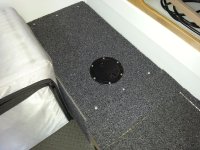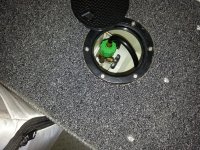NOPEC
Well-known member
KlahanieYou've done very well. Congrats and looking good !
I know that's a joke on the price but not sure which way it's meant to go... I've seen a low price or two mentioned on this forum for finished campers before but my research never matched them ... if only CPT had those sized shells readiy available.
Even for a basic built it would be easy to spend double your outlay. So, good on you.
I'm with you on hatches thru the walls. Only gotcha might be if ferries wants a visual on the LPG tank being shut off. Have seen it before with other travellers and have been asked myself (but not in BC iirc). I took to carrying an old BC Ferries "checked/shut off" sticker and applying it before hand across the factory LPG compartment door - even though that space had long been converted to shoe storage
Thanks for posting. Enjoy your travels !
Ah yes, another failed attempt at humour. The story of my life.......... The "joke" was about our Canadian dollar being referred to as a Peso or worse, by many of my American friends and a few folks here as well. The costs cited on the post were in Canadian dollars, very rough estimates aside from the actual shell. I actually did a little shopping in the "It seemed like a good idea at the time" departments of FBMPlace and Kijiji and bought a few things there for this project so that took a bit of the edge off the total cost.
Funny about BC inland ferries and propane. Many here on ExPo will have driven on BC Highway #23 south from Revelstoke (highly recommended if you haven't
I didn't end up doing the solenoid for a variety of reasons but I did put an easy access marine screw hatch in the lid of the propane locker for both a quick shutdown if need be and for anyone else who might need to confirm that I am following the rules. BTW, I have also used the old "red sticker" trick
Here is a pic of the current set up. Cheers


Last edited:
